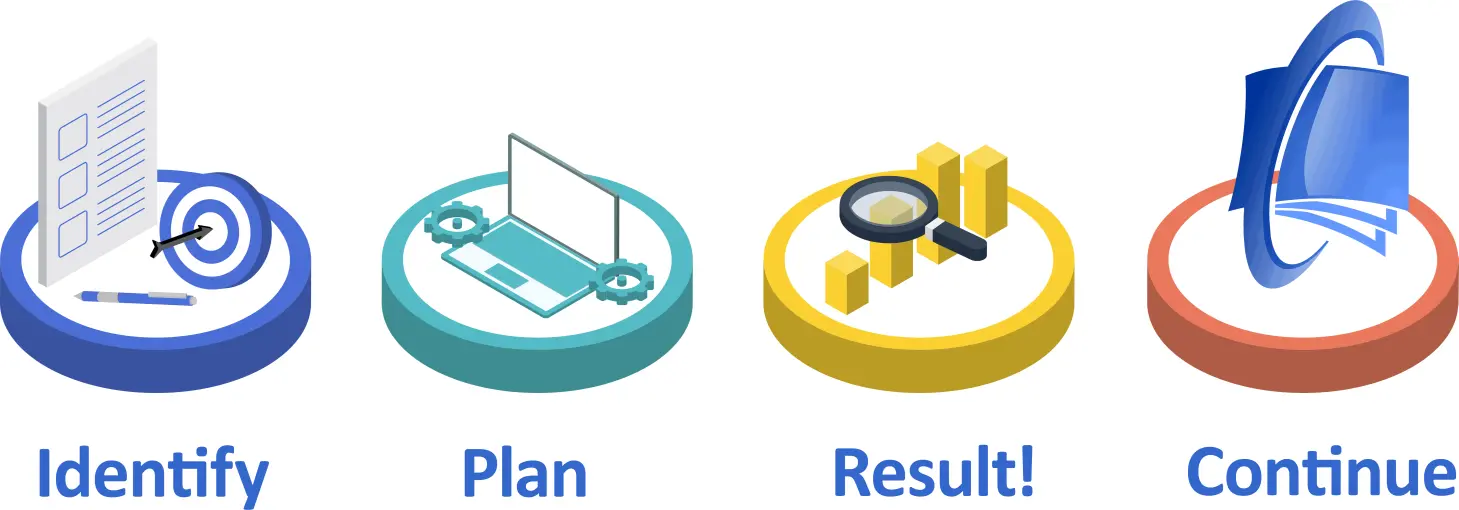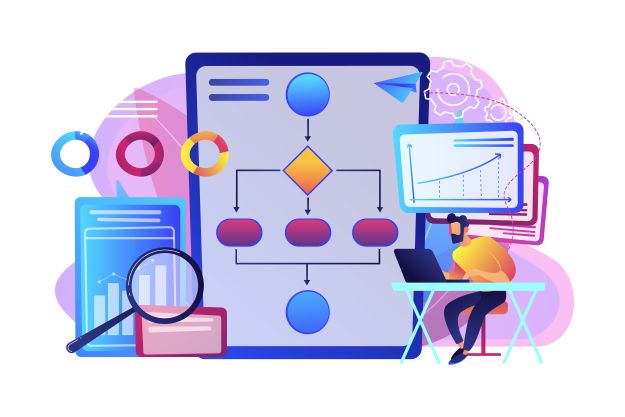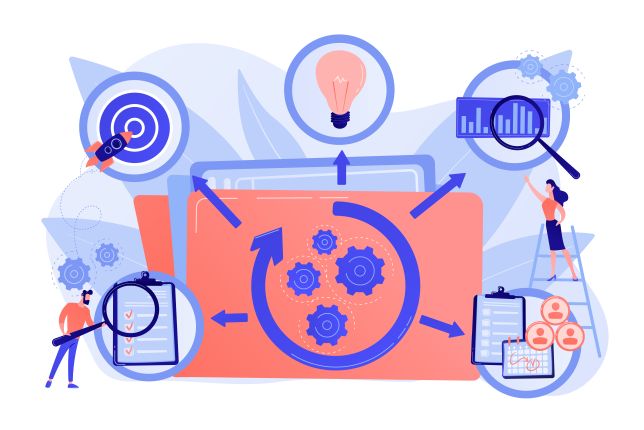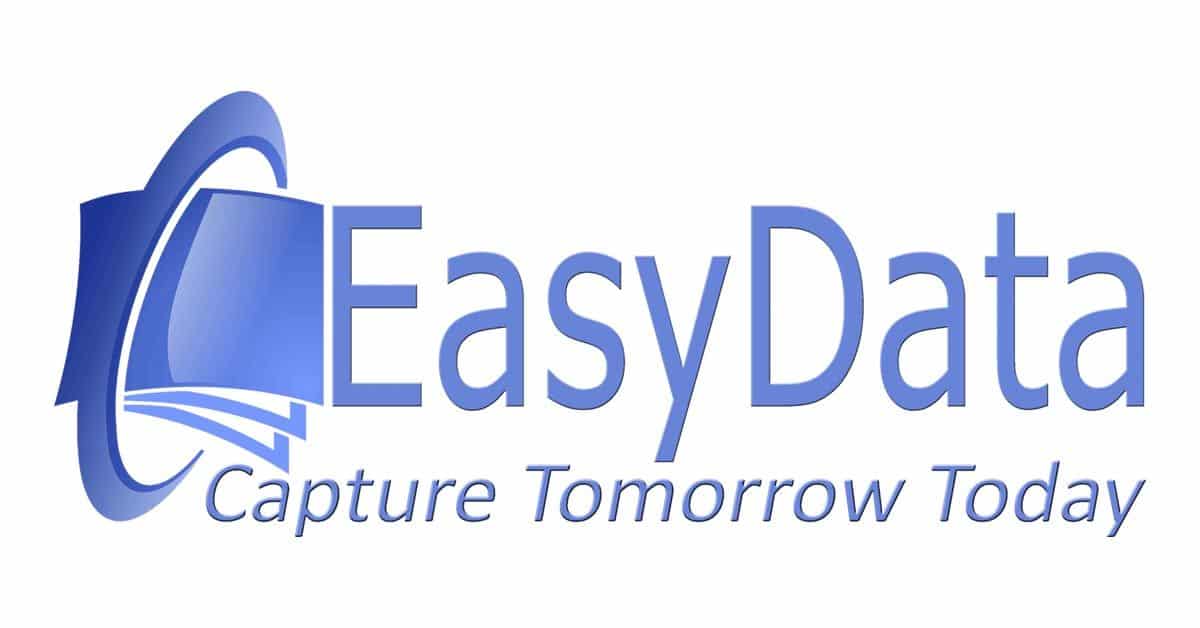Our process checker will save you money
Process optimization, your steps to efficiency
Business Process Management (BPM), is your magic formula that promises process optimization.
You may think, why process optimization? There’s nothing wrong with my business processes, right?
Yes, that could be the case, and if so, this article isn’t written for you. However, we are curious about your experiences.
How do you implement the Business Process Management cycle? How do you highlight and appreciate the individual BPM core points within your organization and their benefits?
At EasyData, we know that cost reduction is always possible through the path of process optimization.
That is our ambition, and that is what this article is about. How can you achieve higher efficiency with lower costs, improving business results while simultaneously increasing job satisfaction? And we do it ourselves too…
EasyData has been an innovative technology developer for over 25 years. To achieve this, you must be an organization that adapts flexibly to market changes. These changes can be very powerful, especially in IT. Think of the introduction of generative AI, e.g., ChatGPT. In this article, we discuss how we deal with potential problems caused by internal or external factors. Our answer to this is collaborative teams, scalable, competitive BPM structure that enhances productivity.
When discussing Business Process Management, the emphasis is first and foremost on ‘Management’. Without ´Management´ there can be no business optimization. In this article, we will help you plan your own business processes through a series of clear steps. With that knowledge, you can start optimizing with the most effective management method at hand.


Identifying your business process
Let’s take a look at what’s in focus when you decide to improve a business process within an organization. It starts with the definition of a business process: what is it exactly?
Identifying your business process is the first important step toward business process improvement.
What exactly does your business process consist of? What does that business process do, and to how does it contribute to your organization as a whole?
Business Process Management often implies a team effort. There are colleagues working together towards a common goal, which in this case is the business process you are mapping out.
The question that is crucial for business process identification is to defining workers and suppliers that are relevant for this business process. On a larger scale, your customers naturally come into view.
Which customers depend on the business process in question?
Customers are critical for the process
Customers are at the heart of Business Process Management. You try maximize your productivity to stay ahead of your competitors. When mapping out your business process, focusing on your customers is important. Customers are essential, making them the ideal for testing how your business process is experienced by individual clients, customers, and stakeholders. Ultimately, the successful experiences of your customers within your business process determine the overall success of the organization.
That makes incorporating customer experiences essential when identifying your business process. Business Process Management is not just an internal affair. You are trying to perform as well as possible for your customers. That is where your opportunity for applied BPM lies.
To what extent is your business process able to meet the needs and expectations of your customers?
Naming and writing out (potential) customers when identifying your business process is important. Answering this question sets another part of your organization in motion.
Ask your marketing department to test customer expectations in relation to your business process. Customers generally experience process optimization positively. If they are also asked for their optimization advice, you can immediately note the positive effect in your customer experience. And this is even before any process optimization has been carried out!


Your mapped business process
Once you have clearly documented your business process, you have established an important foundation for Business Process Management. Indeed, it’s just a starting point, as BPM is a journey that is never truly finished. It’s important to regularly review and update the processes in light of current events. BPM is a field that requires dedicated specialists. When well-organized, BPM can make a positive contribution to the organization as a whole. This article focuses on the management aspect rather than the actual implementation.
For that, we refer to this article. EasyData can assist your organization with both the BPM and the executive part. Our business also stems from the executive part. Our BPM knowledge has grown over 25 years of practical experience into an expertise that doesn’t require you to reinvent the wheel yourself. EasyData will help you identify your process. Based on our knowledge and expertise, we help you choose process automation method that best suits your business and organizational structure. We work together with your employees in order to help you to take quickly visible and motivating steps. Good BPM practice means less mistakes and reduces the need for micromanagement.
Does this article become even more interesting?
Sure! We believe in good guidance and present the following BPM at different levels for the organization.
This will help you gather information about business processes and set goals.

Why Business Process Management?
Business Process Management (BPM) is the method to improve processes within your organization.
You do this by modelling your business processes and creating a step-by-step plan for the process you want to optimize. Management thus begins with a workflow diagram. Then, you analyze the mapped-out steps together with the involved team members. EasyData can already help you with this.
We understand that employees prefer not to leave their comfort zones. People simply don’t like change, but automation can be used to encourage employees to step out of their comfort zones. Your management goals shifting will accelerate once your colleagues achieve visible success in the first step.
If you’ve been following a fixed procedure for years, why would you suddenly change it? It is precisely in this part that we can be helpful, for example, by automating the process steps upon discussion. Our approach to BPM is not purely technically. When organizations bring in automation as a way to decrease human effort rather than replace it, the real cost savings start.


Automate your process step
EasyData provides you with practical solutions that are quickly implemented and efficient, both online and offline. This is useful when analyzing your business process, as you can quickly and effectively test in practice whether a proposed process automation step truly delivers the results you have in mind. With this approach, you will actively automate your process. You will spark enthusiasm in your colleagues by reaching strategic business goals faster with participation from the team.
We keep an eye on your BPM process!
Once you have succeeded at BPM, keep monitoring the process, as the work is not finished. A successful BPM strategy uses time for optimization as the basic part of the plan. Improving processes does not take time; in fact, it results in additional cost savings.
The reason for this is simple: the world is constantly changing, and your organization, of course, is no exception. These ever-shifting parameters in your business will impact the success of BPM. From this perspective, BPM will be part of your regular strategic planning. EasyData Monitoring provides you with valuable data for this purpose.
Business Process Management according to EasyData
This is the essence of our support for Business Process Management. It involves clearly defining a business process through a series of activities. BPM allows you to automate these business processes step-by-step and monitor them over a longer period of time. This data helps the organization evaluate the process. It usually consists of three elements: automating processes, centralizing information, and reducing manual actions.
BPM aims to eliminate existing obstacles, reduce errors and data loss while increasing transparency, interdepartmental communication and productivity.
With those internal evaluation data at hand, you can then find ways to further improve efficiency and focus on reducing process costs or further minimizing errors.
BPM is a continuous process. You will see that Business Process Management leads to better business results. At EasyData, we are committed to a service-oriented approach towards involved employees. Once that mutual trust has developed, we will practice the best possible BPM together.

The Secret of Business Process Management


Your benefits with Business Process Management
BPM assists business users in connecting complex processes. For entrepreneurs committed to digital transformation, BPM will digitize processes across the organization, cut on IT costs, increase flexibility, and enhance overall efficiency. BPM also helps to identify performance bottlenecks.
Discussing existing process issues internally promotes collaboration and improves constructive internal decision-making. This, in turn, leads to an increased competitive advantage and, as a whole, promotes organizational growth. Well-designed BPM systems play a key role in improving internal processes. They help employees navigate complex processes, retain and expand knowledge throughout the organization. For convenience, we split BPM into three streams.

System-oriented BPM (or integration-oriented BPM)
This type of business process management system handles processes that are primarily dependent on existing business systems. Think of systems like DMS, CRM, or ERP. System-oriented BPM software features extensive integrations and API access to create fast and efficient business processes. A popular example is ChatGPT, which provides an API allowing you to connect various software systems within your organization.

Person-oriented BPM
It is focused on individuals and built with various smart algorithms. Such processes are primarily carried out by people. A good metaphor is a cleaning professional; you wouldn’t replace them with a robot, as it would miss the corners and other nuances that humans naturally notice.
In other words, automation doesn’t replace all your processes.

Document-oriented BPM
If your organization’s focus is on document-intensive projects, BPM is directed towards this stream. The document-centric BPM model concentrates on document flows that move throughout the entire organization. This model also works at the personnel involvement level.
Consider document flow: a document is received, then classified, and internally routed. The person who assesses the inflow of the document is usually at a different level than the employee to whom the document is assigned. Document-centric BPM describes these processes.
And where possible, our technology automates these document flows, from any source.






For a successful BPM process, we keep in mind…
Data management consultancy
That sounds more complicated than it really is. Internal stakeholders or a document consultant from EasyData review the current process. Often, we interview various stakeholders via MS Teams and discuss the desired outcomes with management. Our goal is to have a clear picture of the current processes. Effective process management starts with understanding the existing situation.
Mapping the business process
Where necessary, the above process is detailed in writing. We also believe in the power of visual representation, when a short video illustrates measured effectiveness and possible cost savings. In summary, we present the process in the most engaging way possible. Following this, we turn the virtual page and unfold the plan to effectively implement Business Process Management in the organization.
Digital transformation
The jointly created plan is supported by the operational floor (i.e., directly involved parties) and the management (the decision-makers who will benefit from cost savings) alike. The newly designed process document is made available to a small group of users. Once they are satisfied with the adjustments made for the requesting users, the process is open to everyone.
Data visualization
To stay updated on Key Performance Indicators (KPIs), a wide range of options are available. Our preferred monitor system is Grafana, an online dashboarding toolkit, which has broad applicability. If another visualization platform is already in use within the organization, we can easily adapt to it.
Of course, this is not a choice that comes into view halfway through the process of optimization. In the ‘Data management consultancy’ step, this aspect and any preferences have already been identified. We describe these preferences in an engaging manner while planning your existing and desired business processes.
Business process optimization
With an effective reporting system, the organization can effectively direct its activities toward continued optimization and process improvement. Additionally, keep in mind that the world is constantly changing! A properly implemented Business Process Management policy provides every organization with the tools to make timely adjustments based on the provided system indicators.

Process Management Bonus
With the Business Process Management approach, you remove human errors and gaps from your process. Likewise, you improve process efficiency and compliance with your internal processes.
For EasyData, this is an essential part of our expertise in Data Capture and Data Analysis.
From designing, coordinating, aligning, implementing, and then successfully transplanting optimized processes, our hearts race with excitement. Our ambition is to deliver process technology that supports your work process in an effective and easy manner. Practice shows that EasyData stays involved in our client’s considerations for longer periods of time. That continued involvement in strategic considerations of an organization is the biggest compliment we can get!
BPM considerations
So far, this article has covered only the first relevant parts. In many cases it does not stop there, and to conclude, we provide additional arguments for considering Business Process Management. Starting with licensing overhead within your organization.
Employees often use multiple tools, sometimes side by side or each in their own department. This may seem convenient, but apart from the additional licensing costs, data may be continuously requested between different software systems. This can lead to system delays or the establishment of separate data islands with all the potential (AVG) risks involved within your organization.
The ideal BPM architecture helps in retrieving and updating data across different systems in a structured way. In addition to employees, suppliers and customers also benefit from a well-implemented BPM architecture. EasyData is committed to realizing these aspects of your project.


